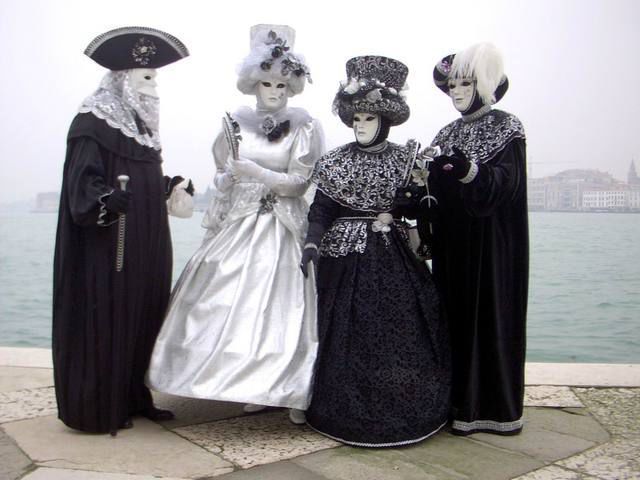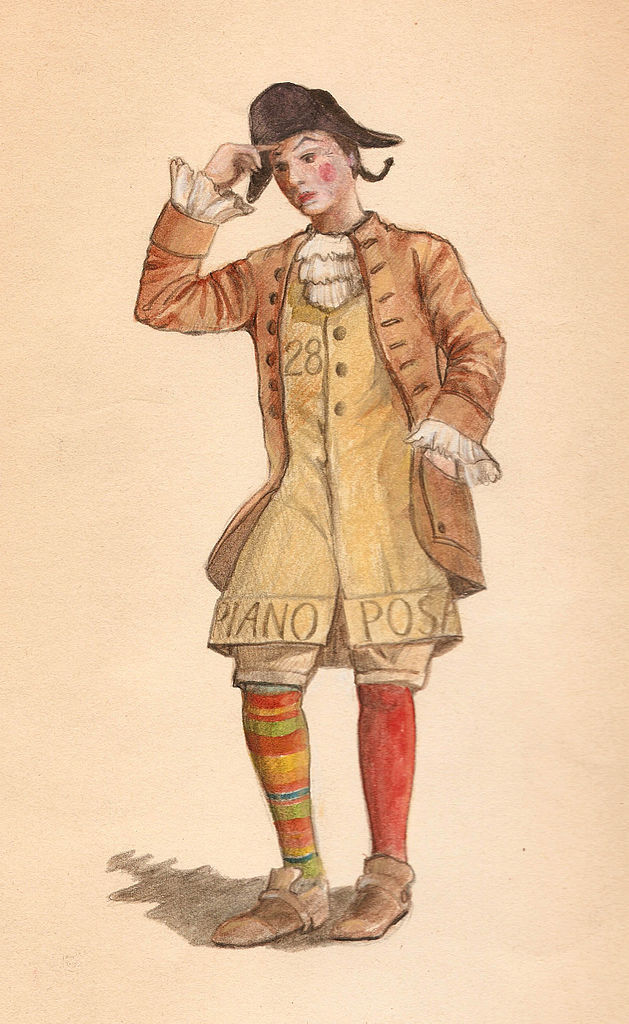Most were in the popular volto intero style – the stylized full-faced, white masks often worn by women during Carnevale.
(Dan Brown, Inferno)
The masks used back during the Carnival of Venice came in all types, many richly decorated with feathers and bright colors. They are probably the most famous masks in the world, but not everyone knows that the origin of Venetian masks is very old, dating back to 1200, and they were probably imported from Constantinople (Istanbul).
It was a Doge (Prince of Venice) who carried the masks in Venice after being fascinated by the veiled faces of Turkish women during a trip to Constantinople. Originally, the masks were called “larve” and were made of oilcloth. Their appearance was that of a stylized face, entirely white. Today, this type of mask is used during the Carnival of Venice and also is known by the name of “volto” (“volto intero mask” means a whole face mask).
In Venice, the use of masks was a great success: many used them even outside the Carnival as a trick to avoid being recognized. Some widespread uses of “volto intero” masks were in gambling, and in the game of love (remember the famous playboy Casanova?). The luxurious and joyful habits of the Venetians led to the thoughtless use of masks for committing crimes and deceptions.
Many artisans in the city dedicated themselves to the creation of masks, and in 1436 the work of the maschereri (mask-maker) was officially recognized. This forced in the early 1300s, the city government to prohibit the use of masks out of the Carnival. Meanwhile, the appearance of Venetian costumes became more elaborate. During this period probably came the invention of the Bauta, the most famous Carnival mask.
The Bauta is the evolution of the mask called larva or volto, and it has an enlarged and protruding chin that originally served to change the timbre of the voice, making the wearer unrecognizable.
The Bauta is formed not only by the mask, but also from the “zendale,” a long black cape almost to the waist to cover the head and shoulders, and a three-cornered hat.
This costume was the same for ladies and gentlemen, rich and poor, honest and scoundrels. Used during the coronation festivities for the Doges or in honor of visits of famous people, it had become a habit of very common use, present even in the girl’s trousseau.
The Bauta was normally worn to go to the theater, coffee shops, casinos, or even just on the way to the Calle (Venetian alley).
Another typical mask of Venice is the moretta (the “little black”). This mask is very simple: it is a black oval made of velvet or cardboard that completely hides the face, leaving only the eyes uncovered.
The moretta was reserved for women and was sustained without laces, with a hook that the woman held in the mouth, or with a rod to hold in the hand.
In this way, the mask did not allow the wearer to speak, increasing the allure of mystery (and perhaps making a lot of men happy! 🙂 Even today, the heirs of the moretta masks at the Venice Carnival are those that women bear with a stick in front of the face.
A mask we have not yet talked about here is the plague mask, but it has very different origins … we told the story in a previous post.
From traditional Venetian masks are born the famous characters of the Italian Commedia dell’Arte (a tradition born in the sixteenth century) belonging to the folk tradition and linked to the different regions of Italy.
The Venetian characters of the Commedia dell’Arte are many; a very famous one is Colombina: a servant who is divided between her love for Arlecchino and the advances of Pantalone (the other two characters of the Venetian Carnival).
In the city of Florence, the most famous Carnival character is Stenterello.
This character was born in the late 1700s, and was invented by a watchmaker in Piazza del Duomo who had a passion for the theater.
The word “stenterello” means puny, barely grown, and is still used today in Florence to indicate a very thin or weak-looking child. The dress of Stenterello is very colorful and cheerful, but has something in common with that of the Venetian costumes: a black three-cornered hat, the same hat that is part of the disguise of the Bauta.
There seems to be a dutiful last clarification: the Italian word “maschera” (mask) is used to indicate both the mask itself, as well as the whole costume. Therefore, Stenterello is a “maschera.”
Pictures by falpala.it, serenaitalian and venipedia.











